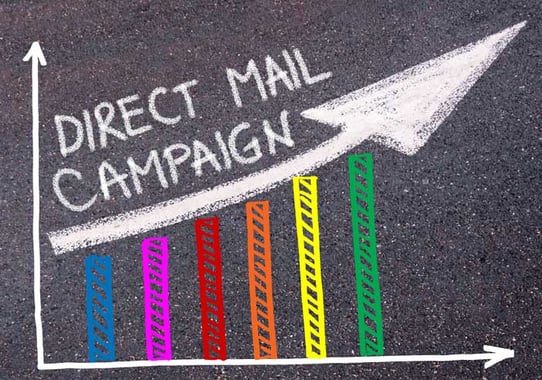Have you heard that direct mail is dead? I think it’s fair to say that mass mail is dead, but direct mail still has a place in your dealership’s marketing strategy.

Quite simply, it’s about reach. Most dealerships can reach about 50 percent of their customers via email alone. When they add social channels like Facebook and Instagram, that reach rises to 80 percent. But it’s virtually impossible to reach 100 percent of your customers unless you also include direct mail.
Why direct mail? Because it works. Advantages of direct mail include:
- 85% of consumers sort through and read selective mail pieces each day
- Mail is highly targeted and tangible
- Direct mail has highest rate of success at new customer acquisition at 34%
- 50% of people say they pay more attention to direct mail than any other channel
You might also have heard that young people don’t respond to mail, but that’s simply not true. When combined with digital strategies, the use of direct mail significantly increases campaign response rates across all demographic profiles:
- Direct mail only – 6%
- Direct mail + social display – 20%
- Direct mail + email – 27%
- Direct mail + email + social display – 37%
These metrics show us that direct mail as a channel is not dead, as long as it is used correctly and integrated with your marketing strategy.
What doesn’t work is a strategy that includes blanketing your entire primary market area (PMA) with mass mailings. This strategy is ineffective, drives up marketing costs and decreases ROI.
How to Get Results with Direct Mail
Across the board at most dealerships, direct mail budgets are decreasing. That’s fine, because with today’s technology we have the benefit of targeting customers based on data, which means there is no need to send mail to everyone in a zip code.
Direct mail is most effective when incorporated into three different types of campaigns.
1) Trigger-based campaigns
Trigger-based campaigns have business rules tied to them and are often automated. Based on the data in your DMS, communications are sent out to customers at critical defection points.
On the sales side, communications include in-market car shoppers who are ready to buy, in equity customers and lease expiration.
On the service side, communications include service reminders, declined services and past due maintenance reminders.
You can’t afford to lose your loyal customers, therefore it’s worth it to ensure higher ROI by including direct mail into your multi-channel strategy.
2) Seasonal campaigns
These are predictable events that happen at a certain time every year.
On the sales side, manufacturers and dealers have annual sales events. Lexus always has a December sales event, while Ford, Chevy and other brands have summer sales events. For dealers, these campaigns should include a direct mail strategy to leverage opportunities like rebates and other incentives offered by manufacturers.
On the service side, we know that tires are best advertised in the fall and again in the spring. The data in your DMS can tell you, based on average miles driven, which customers are ready for new tires.
3) Supplemental Campaigns
These campaigns are geared around specific events not driven by the manufacturer. For example, dealer service clinics, sales clinics and the holidays.
Sending holiday cards to customers is a successful customer appreciation strategy. Simply send an attractive card in an envelope, thank your customers for their business and wish their family the best. You might want to include an offer but it really isn’t necessary. Even without offers, holiday card campaigns will generate ROI. More importantly, they generate goodwill, which is priceless.
When used selectively and as part of targeted, personalized campaigns, direct mail is still a viable and highly effective channel. But in today’s mobile first world, the reach and ROI of these campaigns greatly increase when combined with digital strategies that include email, social advertising, PPC, display ads and geo-fencing.

